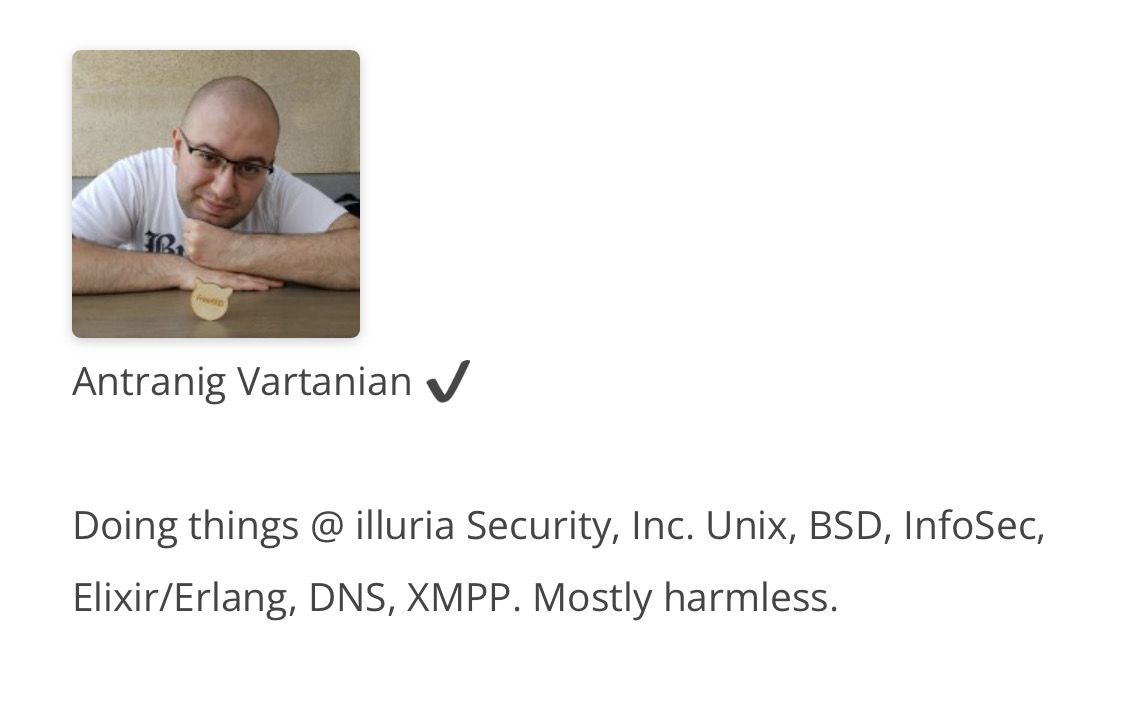Couple of days ago when I was browsing the internet I stumbled upon Jim Nielsen’s blog, where at the top it said
Verified ($10/year for the domain)

Luckily, his blog is so organized (unlike mine) where I found the post named Verified Personal Website in which he talked about this.
Personally, I don’t have enough CSS skills to do that, but I added a check mark next to my name on my blog (thank you Unicode!).

I think this is amazing and it should be used more by bloggers everywhere. If someone opens a blog they should see a check mark. Maybe a cute one in SVG, maybe a CSS trick, maybe it’s just an image, but it should be there.
Why? so we remind people that on the internet, whenever you have a domain, you are already verified.
Can scammers scam and criminals phish? yes, indeed. But unlike the not-very-social-media, it’s hard to do that.
Ironically, having a website on the internet costs less than having a “verified” social media account, say on Twitter.
Currently, Twitter Blue costs $8/month or $84/year.
Let’s see how much would it cost to have a blog on the internet.
First thing first, you need a domain, and it can be anything that you feel awesome with. Awesome-ness is the first and only rule.
Here’s an awesome domain that I found is available using NameCheap.

This is awesome!
Next, we need to host our website. Well, lemme check my favorite server hosting platform, Vultr.

A machine with a single CPU and a 1GB of RAM, that’s plenty!
I mean, with that much power, you can easily run WordPress (if you’re using caching).
Or, if you don’t want to get techy-techy at all, you can use a static site generator. You like Markdown and text files? There’s Hugo for you. Do you want to just click on buttons and BOOM, your website is ready? Have a look at Publii!
So, how much does it cost in the end? Here’s how it looks like if you pay annually or monthly, per year.
| A/M |
Twitter Blue |
Website on the Internet |
| Monthly |
$8×12 = $96 |
$8×12 + $10 = $70 |
| Annually |
$84 |
$8×12 + $10 = $70 |
So yes, it is cheaper to have a website on the internet.
Wait a second, annually vs monthly looks the same? OF COURSE IT DOES! THIS IS THE INTERNET! We want you to think “huh, 70 dollars? well that’s dope” and not about “well, if I pay annually now, I will save 12 dollars” and then completely forget about that service anyway.
Oh, and did I tell you about the features of having a website on the internet? Well we don’t have a list, but here’s some things from the top of my head.
- You get to be verified, because welcome to the internet
- You get to post whatever you want
- you get to edit them! can you believe that?
- You can upload photos and make it looks like a photo blog
- Unlike other platforms, which seemed to be for photographers but not anymore, you can tag things, and make albums!
- You can upload podcasts!
- Hell, and if you ever want to leave, you can just redirect your domain to somewhere else 🙂
And I’m not even talking about the other awesome features of having a domain, like, custom emails! Be that person that does NOT have a @gmail.com, but @AwesomeIsHere.net!
And hey, Twitter Blue might die, Twitter might die, every other company might die, but the internet will not 🙂
That’s all folks…



